This page is not compatible with Internet Explorer.
For security reasons, we recommend that you use an up-to-date browser, such as Microsoft Edge, Google Chrome, Safari, or Mozilla Firefox.
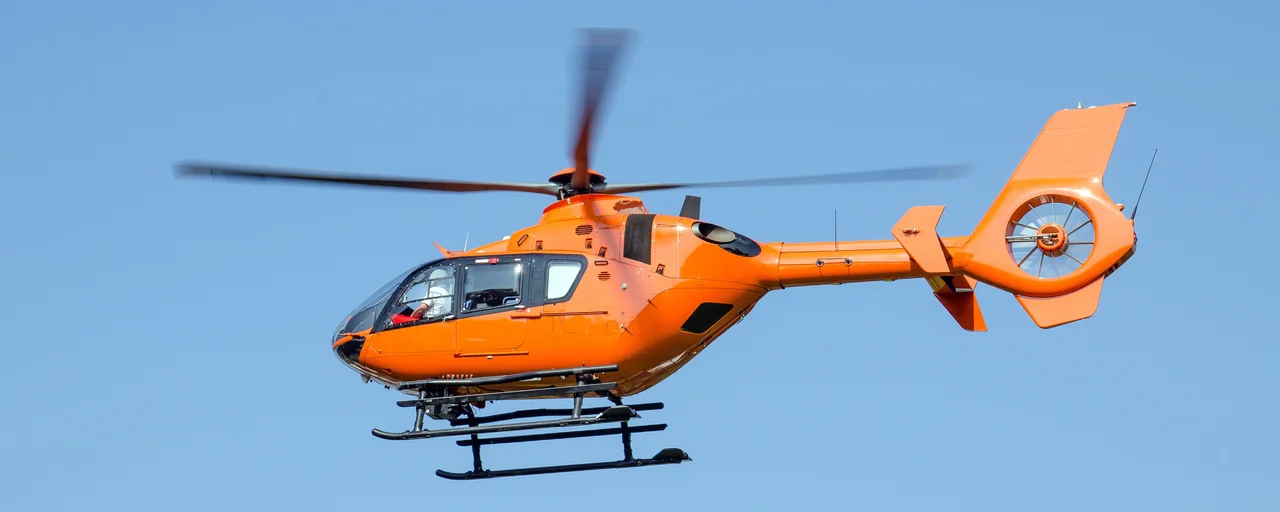
To explore advanced methods for verifying that its avionics systems meet specifications and international standards, Airbus Helicopters studied a helicopter antenna. The question was: can an accurate simulation of antenna performance be created from CT scans of the relevant components?
Simulation of the Characteristics of Complex Systems Based on CT Scan Data Using the Example of a Radar Altimeter Antenna
Radio altimeter antennas are an important component of avionics systems and a key aircraft sensor during critical phases of flight, such as takeoff and landing in poor or no visibility. Airbus Helicopters, a leading manufacturer in the helicopter market, is responsible for the overall avionics systems of its products, while the antenna itself is supplied by a subcontractor.
To explore advanced methods for verifying that its avionics systems meet specifications and international standards, Airbus Helicopters studied a helicopter antenna with an operating frequency band of 4.2–4.4 GHz. The question was: can an accurate simulation of antenna performance be created from CT scans of the relevant components? This is an interesting question for anyone working in high-frequency technology.

The CT scan of the antenna was converted into a STEP model using the Reverse Engineering module of VGSTUDIO MAX.
The objective of Airbus Helicopters was to optimize the installation of the antennas, rather than their manufacture. The model on which the simulation was based was generated from a CT scan of the antenna using Volume Graphics software for industrial computed tomography (CT). By comparing simulation and measurements on real radar altimeter antennas, Airbus found that antenna characteristics determined in simulations on antenna models generated by reverse engineering are comparable to values measured on real antennas. The comparison between simulation and real-world data shows that suppliers of high-frequency equipment now have a new way to determine electromagnetic characteristics of components using CT.
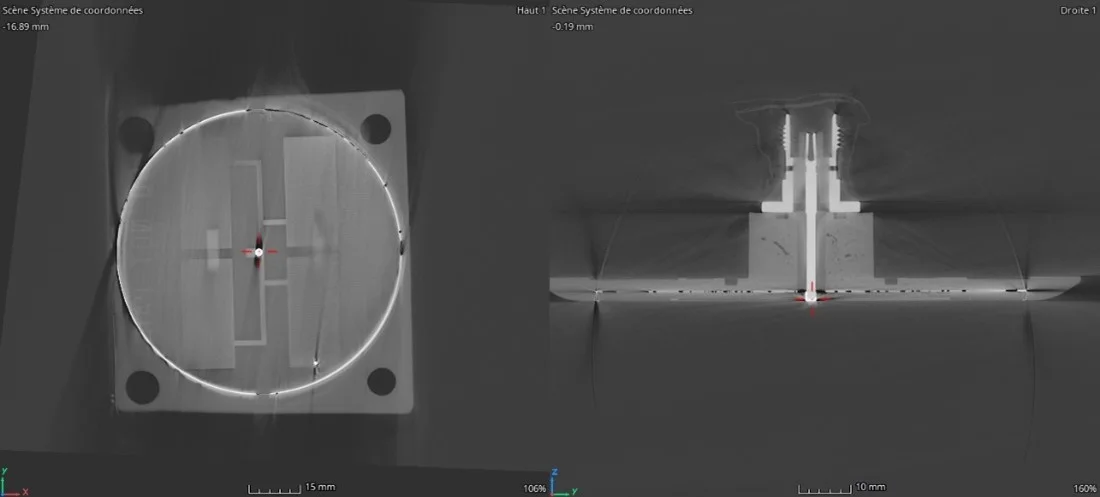
2D view of the radiating element of the altimeter antenna
“Our goal was to verify that the simulated characteristics matched real-world characteristics in order to achieve antenna installation simulation representative of reality,” said Hervé Dutruc, senior expert, radio antennas, and antennas squad leader at Airbus Helicopters.
In electromagnetic waves, the electric field is very sensitive to factors such as layer thickness, materials, and surrounding elements. The ratio of the layer thicknesses of the antenna to the surrounding material is important. Both are readily detectable with a CT scan, and both affect antenna characteristics. As opposed to simulating on a nominal CAD model, using a CT scan can allow for manufacturing variations in the simulation, or even the calculation of results of assemblies without existing CAD data.
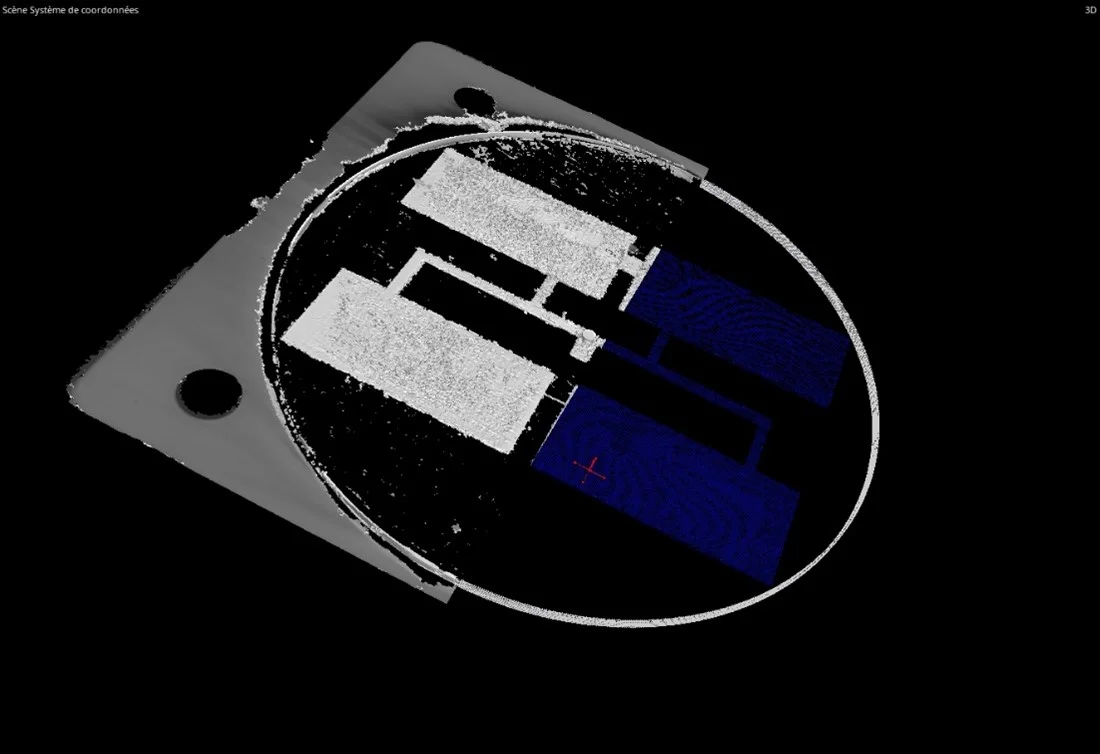
3D view of the reconstructed antenna with the reverse-engineered parts of the radiating elements in blue
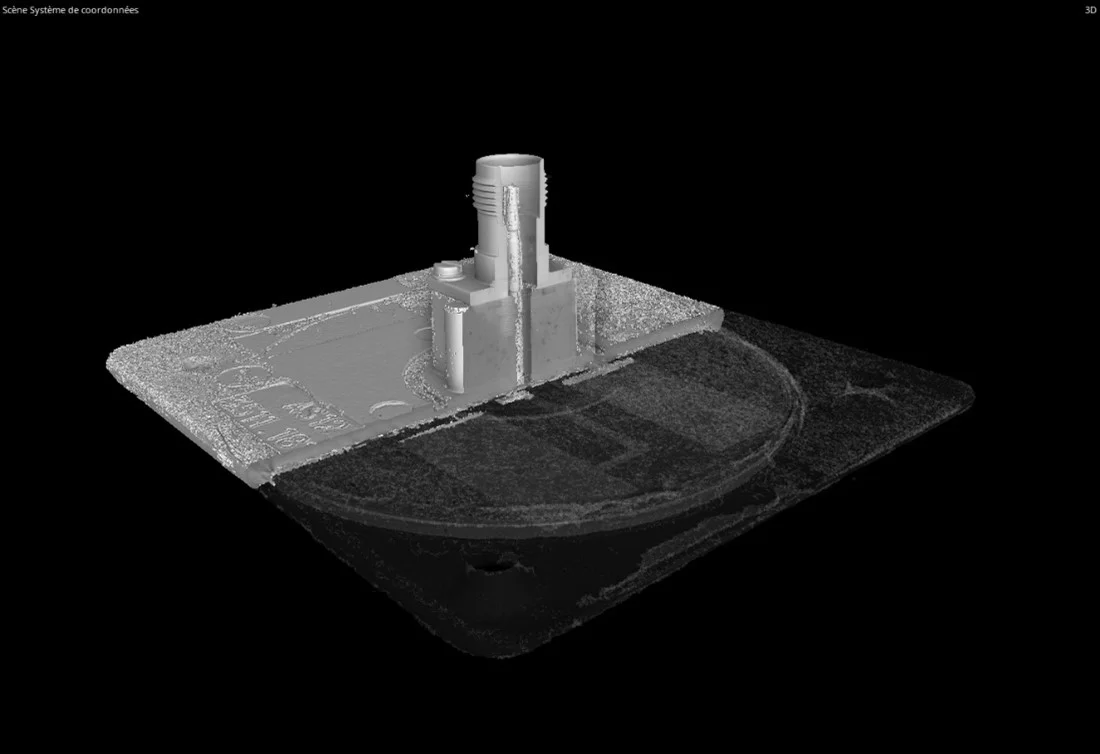
3D view of the reconstructed CT scan
As a first step, the Airbus CT department scanned a radar altimeter antenna using CT to obtain the antenna's internal geometries. After that, a component segmentation was performed with the Volume Graphics software VGSTUDIO MAX. Based on the segmented surfaces, each component was converted with the Reverse Engineering module of VGSTUDIO MAX.
Following this, all components were exported (in STEP format) for use in an appropriate simulation software. The simulation software was then used to simulate the decoupling between two antennas, and the simulation results were compared with measurements made with real antennas.
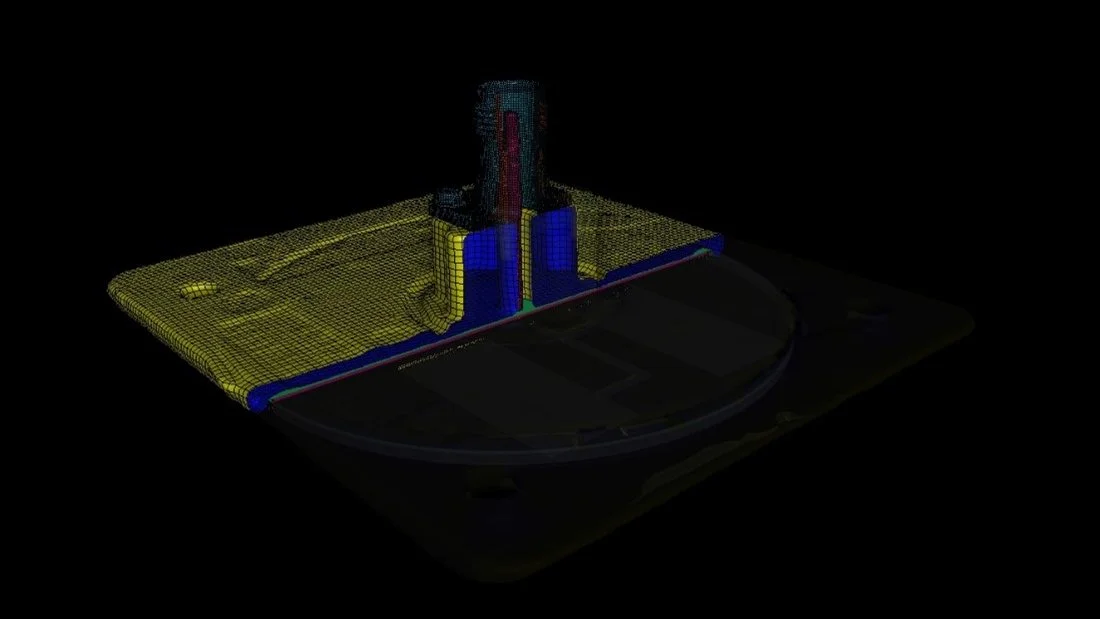
Clipping view of the STEP file based on the CT scan
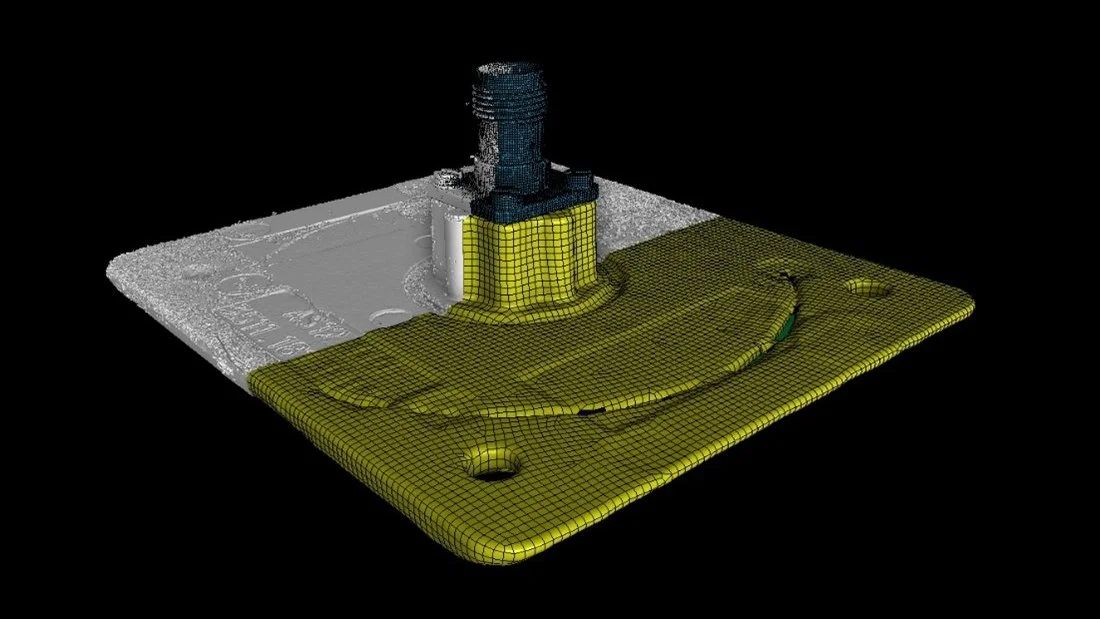
Combination of reconstructed CT scan and STEP model in a 3D view
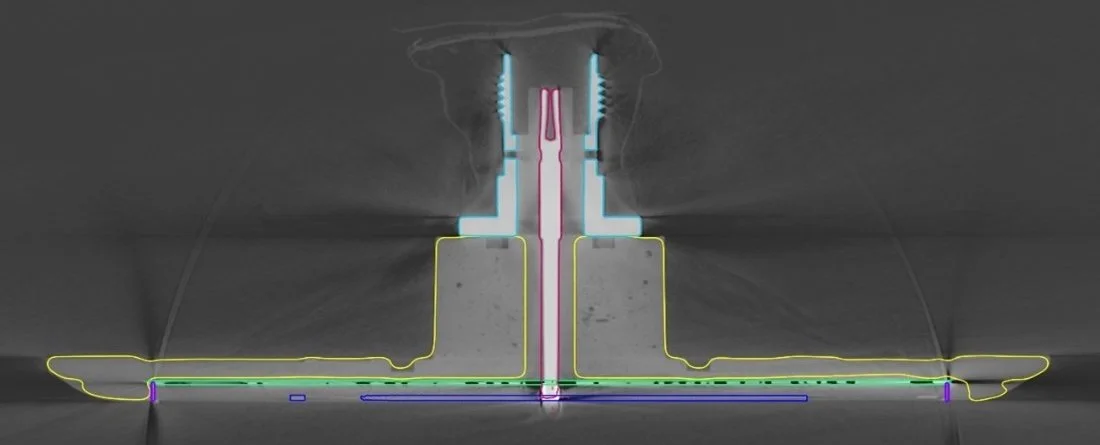
2D view of the CT scan combined with the STEP model, with each component of the antenna shown in a different color

After the elements that have no real influence on the antenna radiation have been removed, this model of the antenna remains. This model was then used for the simulations with an application- specific software.
For the simulation on the model of the antenna created by reverse engineering, Dutruc’s team used an application-specific software to simulate the antenna characteristics. Decoupling simulation was performed at 4.3 GHz. Some slight deviations were noticed, which could be explained by the fact that the simulated antenna was tuned at 4.1 GHz instead of 4.3 GHz. From the CT scan, relevant geometric parameters can be easily adjusted to shift the tuned central frequency slightly.
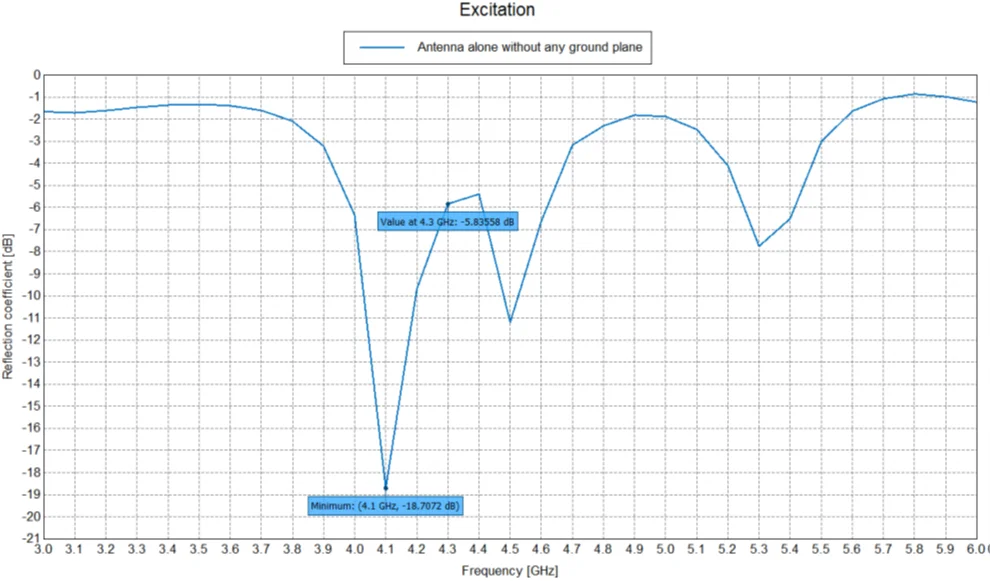
The return-loss simulation highlighted a slight shift of the central tuned frequency, which can be corrected by adjusting some geometric parameters.
Hervé concluded, "The results are quite similar to the measurements, so we found this reverse engineering technique to be very promising."
About Volume Graphics and Hexagon
Volume Graphics GmbH has been developing software for non-destructive testing based on industrial computed tomography (CT) for over 20 years. Customers around the world, e.g., from the automotive, aerospace, and electronics industries, use Volume Graphics software for quality assurance in product development and production. In addition to its headquarters in Heidelberg, the company has branches in the USA, Japan, Singapore, and China. Learn more at www.volumegraphics.com and follow us @volume_graphics.
Since 2020, Volume Graphics has been part of Hexagon. Hexagon is a global leader in sensor, software and autonomous solutions. We are putting data to work to boost efficiency, productivity, and quality across industrial, manufacturing, infrastructure, safety, and mobility applications. Our technologies are shaping urban and production ecosystems to become increasingly connected and autonomous – ensuring a scalable, sustainable future.
Hexagon (Nasdaq Stockholm: HEXA B) has approximately 21,000 employees in 50 countries and net sales of approximately 3.9bn EUR. Learn more at hexagon.com and follow us @HexagonAB.